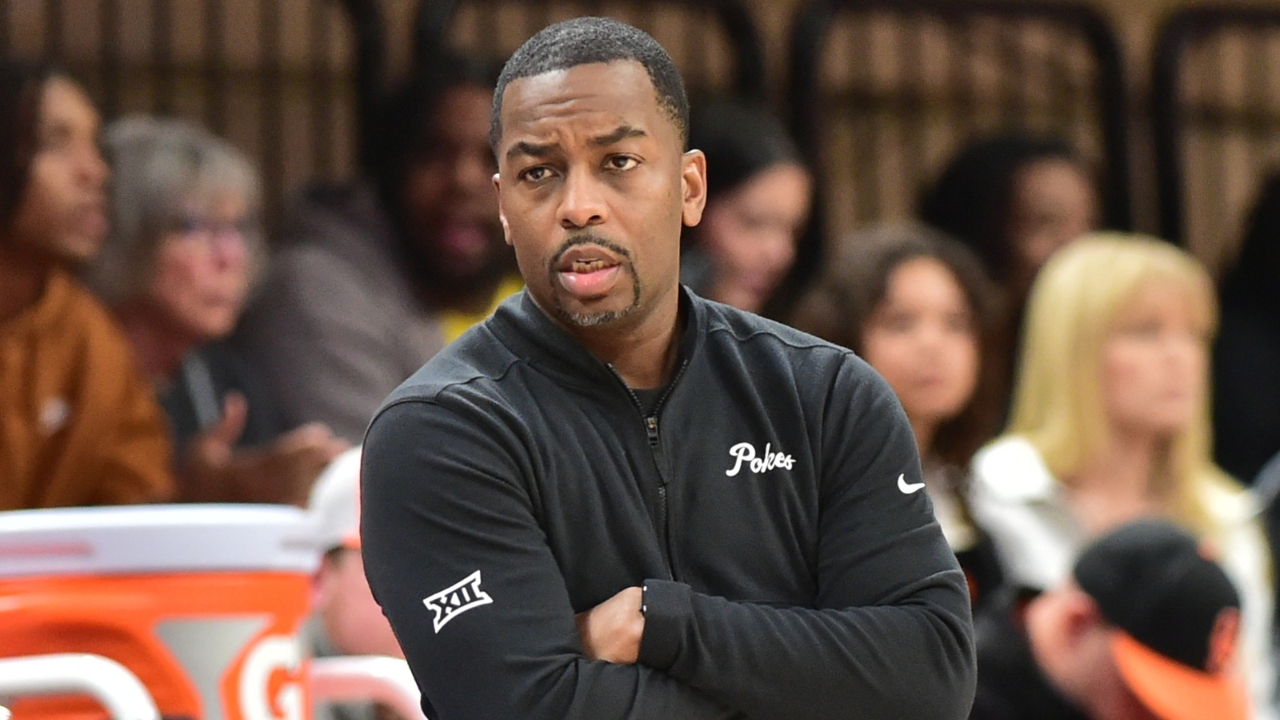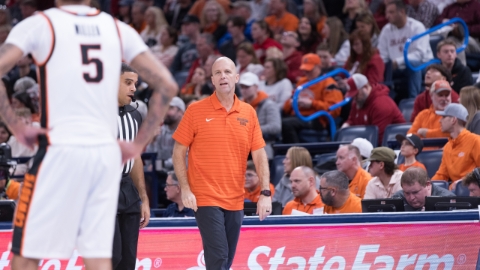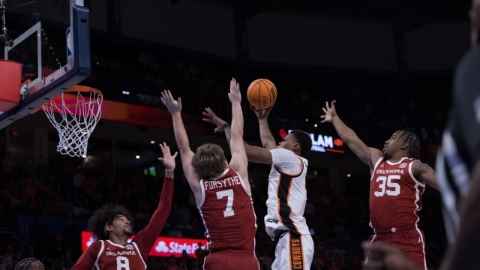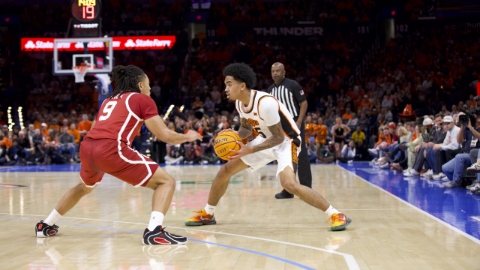
STILLWATER — Oklahoma State is roughly 48 hours from hosting No. 19 BYU in Gallagher-Iba Arena this weekend. So, naturally, Mike Boynton and a select player, this time being freshman Eric Dailey Jr., met with the media on Thursday afternoon to discuss the upcoming game.
It was roughly 20 minutes with Dailey Jr. about his journey to Stillwater, what drives and motivates him as a player and if he’s able to block out social media noise about this season and focus on getting better every day. As for Boynton, it was just a touch over 30 minutes, which is longer than usual. However, less than five of those minutes were spent on talking about the upcoming game against BYU. A bulk of the time was spent talking about his recent interview with Bill Haisten of the Tulsa World talking his future with the program and the program’s NIL status, specifically the challenges the program faces in acquiring talented prospects and transfers and trying to retain the talent they have on the roster in the ever-changing landscape of college athletics in the modern portal/NIL era.
One of the biggest points I noticed in the interview with Haisten was the talk of funds, or lack there of, the program has to use for NIL. According to Boynton, there are at least six Big 12 programs who are operating with at least $2 million in NIL spending a year, whereas the Pokes are last in the Big 12 with roughly $500,000 in NIL spending.
It’s incredibly tough to be competitive in any sport when there’s not a lot of money coming in from a collective for either player acquisition or retention, which allows fellow conference members, or other programs across the country, to come in and take your players for more money. However, it’s equally as tough to try and ask for money when the product on the court is below subpar. The Cowboys are currently dead last in conference play with a 2-9 record and are four games below .500 on the season.
In responding on Thursday to that statement, Boynton took full responsibility for the performance on the court stating they have to do a better job in both coaching and playing to put a better product out there for the fans to be willing to donate. He also wanted to make sure people knew that OSU fans definitely still cared about the program and that they had every right to be angry about the situation.
“I don’t know if there’s a magic answer,” Boynton said of improving NIL. “Part of it is we have to play better. The better you play, the more people are willing to invest their time and resources into the program. That’s totally fair. But there is a little bit of a chicken and egg scenario here where as much as people want to pretend that that’s not how recruiting works anymore, that’s just not reality.”
I would agree with him in that in order to be even a moderately successful program in today’s NIL landscape, you have to have the funds to be able to go out and recruit high-end talent out of the transfer portal. No question. It’s unlike even 10 years ago where you could put in a ton of effort building a relationship with a player and their family, such as Cade Cunningham, and use facilities and the hope of success to get high-end talent, such as Cade Cunningham.
However, when you look at the track record Boynton and Co. have had in recruiting both high school players and college players out of the portal, ie. Moussa Cisse, Bryce Thompson, Tyreek Smith, Brandon Garrison and Eric Dailey Jr. just to name a few, there hasn’t been a lack of talent come through the doors of GIA. A fact he mentions in the interview with the Tulsa World. So, the disconnect has to be somewhere else.
The other side of that coin is players like Cisse, Smith, Avery Anderson III and Rondel Walker all hit the transfer portal, either on their own or by the doing of other coaches, due to possible greener grass. So, how do you keep players like Garrison or Dailey happy and in Stillwater?
“I know people are probably contacting Brandon Garrison, that’s the reality,” Boynton said. “Do we want them? If you don’t want them because you don’t want the coach, then OK, he’s gonna go somewhere else. I’m not saying you keep [the players] because you keep the coach, but I’m just saying those things are not mutually exclusive. You’ve got to take care of your kids, otherwise they leave and if your kids leave, sometimes what it does is it sends a message that your kids can be taken easily [by other programs.] Again, it all goes back to having success on the court; we’ve got to play better, we’ve got to win some more games, we’ve got to try to make a run at the end of the season to build some momentum so we can go out and tell there’s a future here, there’s hope to invest in. But you can’t wait until the kids are out the door to tell them you love them, because they’re kind of like ‘you sure? Or do you love me because you hear [another coach] is trying to hit on me?’
Whether it’s ramping up NIL to keep players paid and happy, better recruiting or development, or even whether on the court play and fans showing up and donating money is a chicken and egg situation, I think we can safely say if the product on the court were better, fans would pack out GIA and NIL wouldn’t be that big of an issue. Whatever it is, Boynton understands they need to do a better job.




